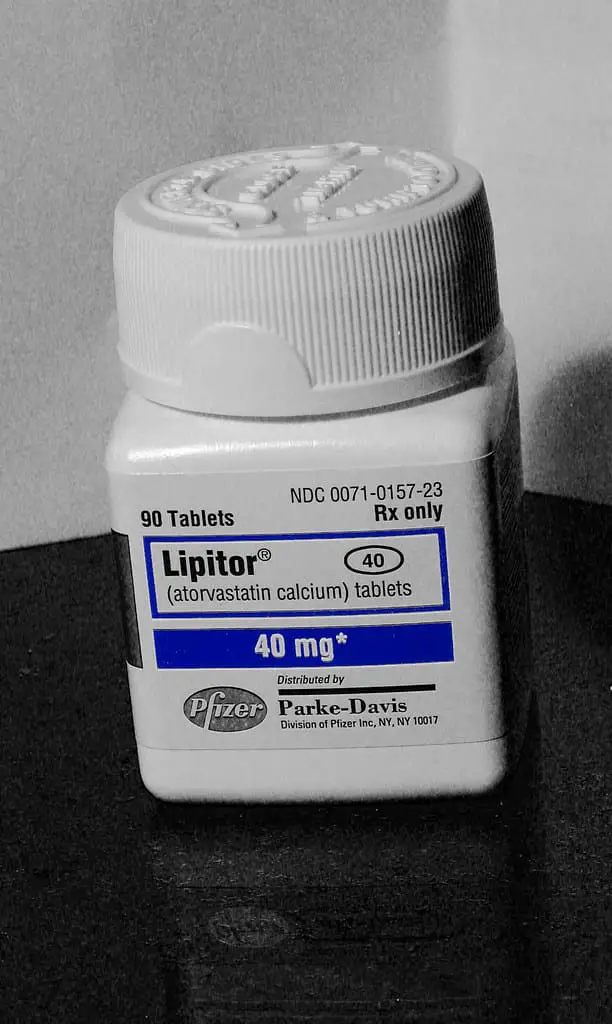In the US there are about 38% of adults suffer from high cholesterol. In this case, the doctor counsels on the importance of exercise and diet and mentions a Statin medication.
These medications are also called HMG-CoA reductase inhibitors.
Among the popular brand name statins, Lipitor and Crestor are two of them. They both are used along with low saturated fat and cholesterol diet. However, they both are statins but are not the same.
This article highlights the differences between Lipitor and Crestor.
Key Takeaways
- Lipitor contains atorvastatin, while Crestor contains rosuvastatin.
- Crestor is more potent than Lipitor in lowering LDL cholesterol.
- Both medications can cause side effects like muscle pain and liver damage.
Lipitor vs Crestor
Lipitor and Crestor are both statin medications used to lower cholesterol. While they have similar functions, they differ in potency, side effects, and the specific types of cholesterol they target.

Lipitor is one of the prescription medicines which belongs to a class of drugs, namely lipid-lowering agents. It helps to lower bad cholesterol in blood levels, such as LDL or low-density lipoprotein. It might be used with other medications or alone.
Crestor is a statin medication that prevents cardiovascular disease who are at higher risk, and abnormal lipids are treated. It is preferred to be used with exercise, weight loss, and dietary changes. Rosuvastatin is sold under the collective mark of Crestor.
Comparison Table
| Parameters of Comparison | Lipitor | Crestor |
|---|---|---|
| Generic name | Atorvastatin | Rosuvastatin |
| Standard dosage | 20mg daily | 10mg daily |
| Side effects | Constipation, nausea, headache, and gas. | Diarrhea, joint pain, depression, and indigestion. |
| Interaction | With birth control pills, antibiotics, and HIV/AIDS medicines. | With blood thinners, cimetidine, and niacin. |
| Avoid | Eating high cholesterol food and grapefruit. | Driking alcohol and using antacids. |
What is Lipitor?
Lipitor is a drug used with a healthy lifestyle to lower triglyceride levels and low-density lipoprotein (the bad cholesterol) in the blood and also raises high-density lipoprotein levels (the good cholesterol).
It also reduces the risk of stroke and heart attack. It might help a person develop heart disease risk or suffer from heart disease.
In 1996, this medicine was approved by the United States FDA or Food and Drug Administration. It works in the body by slowing cholesterol production. It should not be used if someone is suffering from liver disease and is allergic to this medicine.
A pregnant lady should not consume Lipitor because it can harm an unborn baby. To prevent pregnancy, one must use effective birth control. If you become pregnant, stop taking this medicine or tell your doctor immediately.
While taking Lipitor, you should not breastfeed. The risk of rhabdomyolysis and myopathy can increase with excessive intake of grapefruit.
Lipitor can cause the muscle tissue to break down, which can lead to the failure of the kidney. This happens more in older adults, women, or people with poor control of hypothyroidism or kidney disease.
When it comes to younger than 10 years old, it is not approved for them.

What is Crestor?
Crestor belongs to a class of drugs, namely statins. In the arteries, if there is too much cholesterol, then it can increase the risk of heart disease or stroke. Crestor is helpful in controlling levels of triglycerides and cholesterol in the blood.
It might slow down the atherosclerosis progression when taken along with special exercise and diet.
According to a 2009 study, it was founded Crestor reduces 20 percent the risk of vascular events. In August 2003, Crestor was first approved by the United States. In 2004, it was marketed in 56 countries and approved in 154 countries.
The primary medical use of Crestor is used to treat dyslipidemia. Dyslipidemia is a disease of lipoprotein metabolism that results in LDL concentrations in high triglycerides and low HDL levels in the blood.
Apart from the treatment of dyslipidemia, it is also approved for high total cholesterol and triglyceride treatment.
Children 8 to 17 years suffering from inherited conditions that lead to high LDL can consume it. Adults can consume it to control cholesterol levels. It can be taken without or with food once a day.

Main Differences Between Lipitor and Crestor
- It is necessary to tell the doctor about liver problems, diabetes, and muscle pain before the intake of Lipitor, whereas before taking Crestor, it is important to tell the doctor about kidney disease, thyroid disorder, and age more than 65.
- When it comes to grapefruit juice, Lipitor directly interacts with grapefruit juice in large amounts. On the other hand, Crestor is secure to take with grapefruit juice.
- It’s time to consult a doctor if there are serious side effects such as fever, dark urine, and loss of appetite while taking Lipitor. On the flip side, rhabdomyolysis is one of the serious side effects of Crestor.
- If a patient is suffering from low blood pressure, uncontrolled illness, and severe infection, then the patient might need to stop consuming Lipitor. When it comes to Crestor, the signs are dehydration, medical emergency, and electrolyte imbalance.
- Additional warnings included in Lipitor are that the risk of rhabdomyolysis and myopathy can increase with excessive intake of a grapefruit, while anticoagulant-taking patients should be monitored before Crestor intake.




